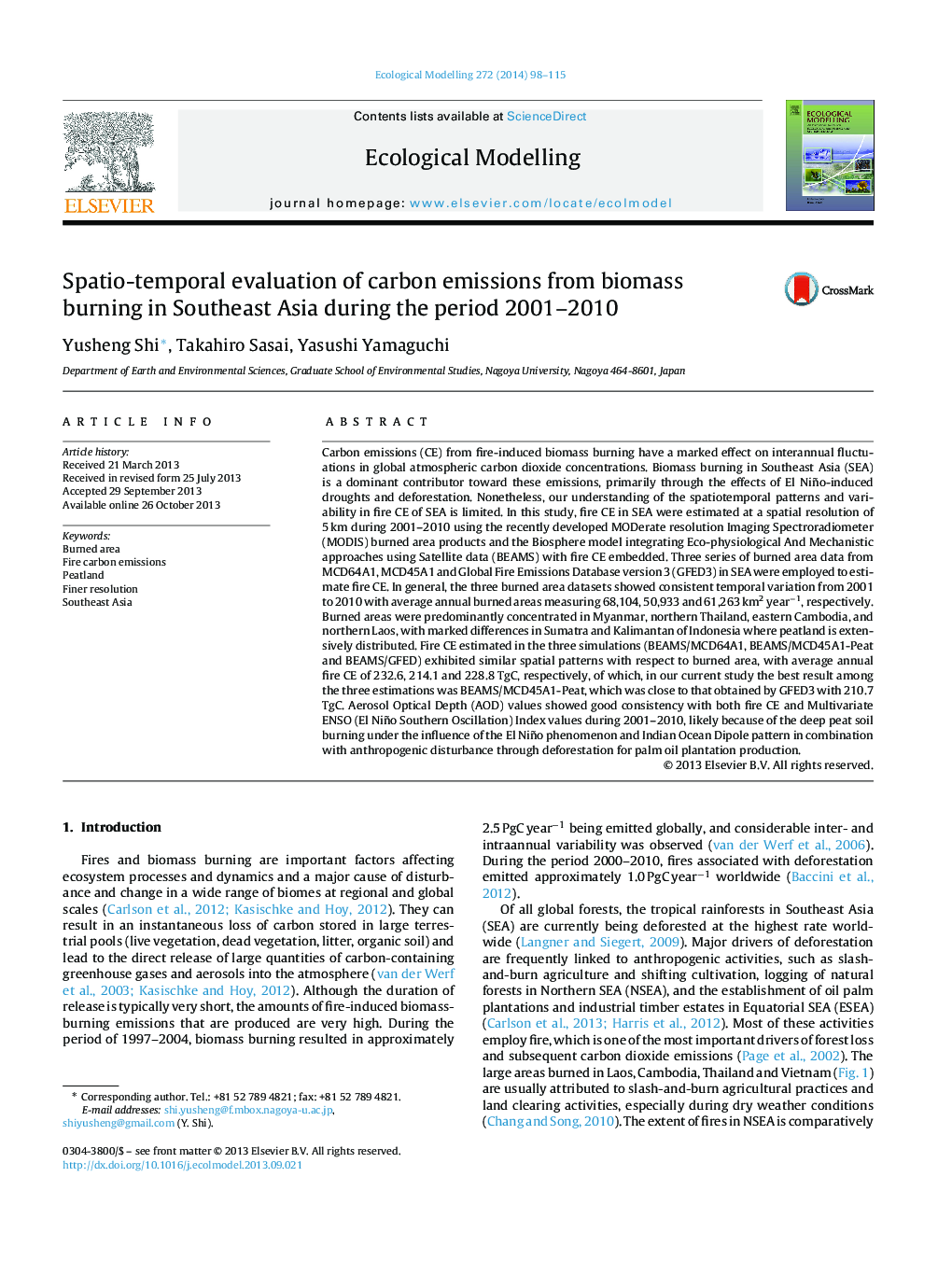| کد مقاله | کد نشریه | سال انتشار | مقاله انگلیسی | نسخه تمام متن |
|---|---|---|---|---|
| 6296987 | 1617474 | 2014 | 18 صفحه PDF | دانلود رایگان |
- We developed fire carbon emissions model with high spatial resolution of 5Â km.
- We evaluated spatio-temporal variations of fire carbon emissions in Southeast Asia.
- The dominant emitters were Indonesia, Myanmar, Cambodia and Thailand.
- The peak of fire carbon emissions varied from NSEA to ESEA.
- El Niño, Indian Ocean Dipole pattern and anthropogenic activity are main drivers.
Carbon emissions (CE) from fire-induced biomass burning have a marked effect on interannual fluctuations in global atmospheric carbon dioxide concentrations. Biomass burning in Southeast Asia (SEA) is a dominant contributor toward these emissions, primarily through the effects of El Niño-induced droughts and deforestation. Nonetheless, our understanding of the spatiotemporal patterns and variability in fire CE of SEA is limited. In this study, fire CE in SEA were estimated at a spatial resolution of 5Â km during 2001-2010 using the recently developed MODerate resolution Imaging Spectroradiometer (MODIS) burned area products and the Biosphere model integrating Eco-physiological And Mechanistic approaches using Satellite data (BEAMS) with fire CE embedded. Three series of burned area data from MCD64A1, MCD45A1 and Global Fire Emissions Database version 3 (GFED3) in SEA were employed to estimate fire CE. In general, the three burned area datasets showed consistent temporal variation from 2001 to 2010 with average annual burned areas measuring 68,104, 50,933 and 61,263Â km2Â yearâ1, respectively. Burned areas were predominantly concentrated in Myanmar, northern Thailand, eastern Cambodia, and northern Laos, with marked differences in Sumatra and Kalimantan of Indonesia where peatland is extensively distributed. Fire CE estimated in the three simulations (BEAMS/MCD64A1, BEAMS/MCD45A1-Peat and BEAMS/GFED) exhibited similar spatial patterns with respect to burned area, with average annual fire CE of 232.6, 214.1 and 228.8 TgC, respectively, of which, in our current study the best result among the three estimations was BEAMS/MCD45A1-Peat, which was close to that obtained by GFED3 with 210.7 TgC. Aerosol Optical Depth (AOD) values showed good consistency with both fire CE and Multivariate ENSO (El Niño Southern Oscillation) Index values during 2001-2010, likely because of the deep peat soil burning under the influence of the El Niño phenomenon and Indian Ocean Dipole pattern in combination with anthropogenic disturbance through deforestation for palm oil plantation production.
Journal: Ecological Modelling - Volume 272, 24 January 2014, Pages 98-115
